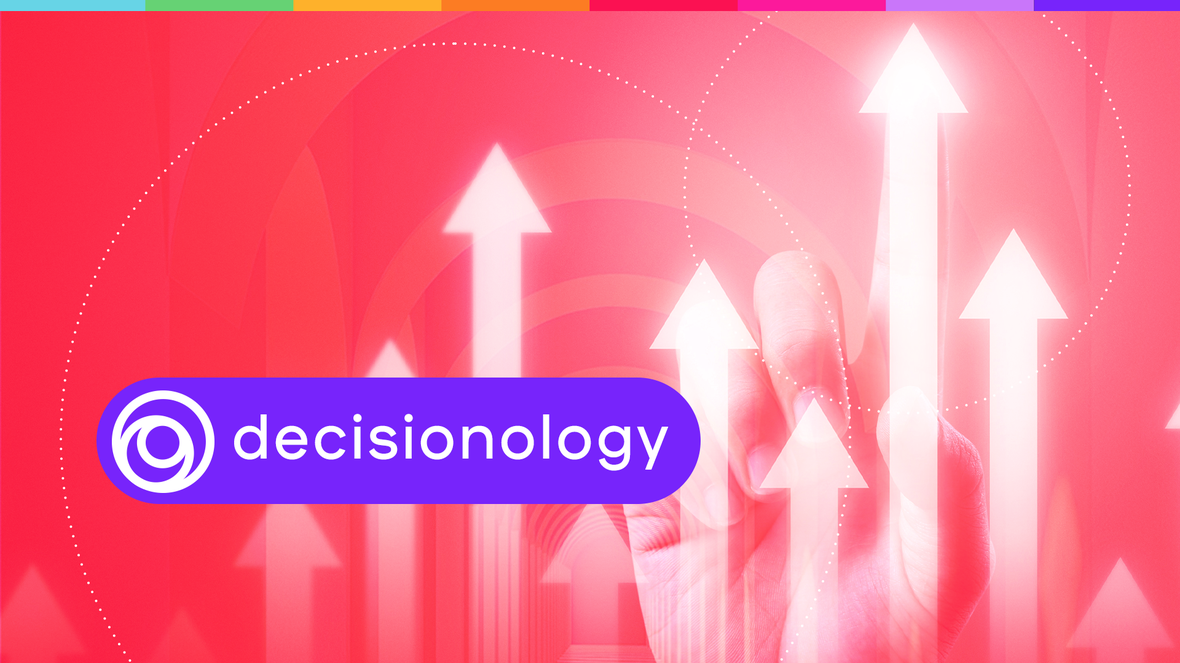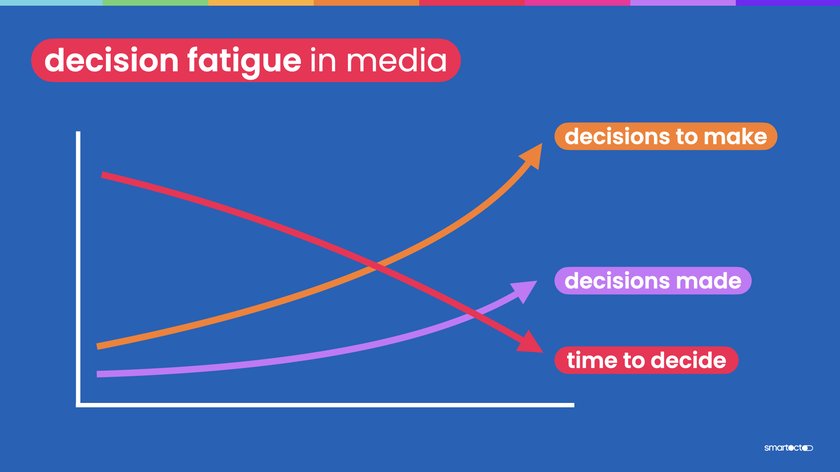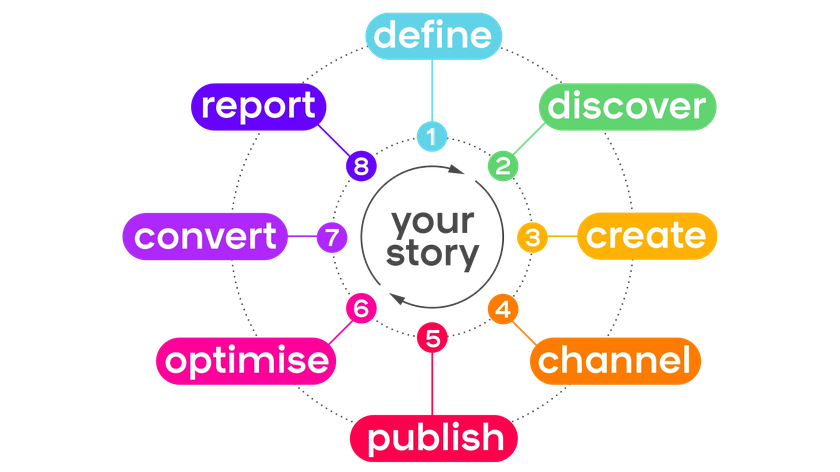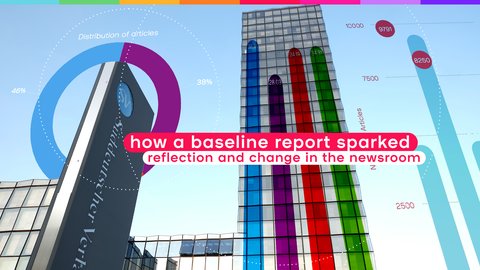We’re introducing smartocto Decisions at a time when traditional media is fighting for survival. CEO Erik van Heeswijk shares his vision of what must happen next.
Decisionology: the crucial skill for the future of media
Oct. 31, 2025 by Erik van Heeswijk

There is really only one thing that media strategists agree on: we live in confusing times. While publishers and broadcasters are still figuring out the last bits of ‘Digital First’, business models are already shifting.
The lesson is: be quick.
The truth is that you only get 10 years to figure out how to adjust to new technology . The digital highway started to be a reality for the broader public in 1995. By 2010 the internet was dominated by Facebook, Google and smartphones - things barely a whisper 15 years before. Their rise left those old business models floundering in their wake. And now, in the next huge wave, AI is hitting the industry. And we've already seen the panic set in again.
So while it’s crucial to address the question of what to do next/ how to respond, the real challenge is to create a newsroom that is able to withstand change, whatever happens in another 15 years. Of one thing we can be certain. Heraclitus had it right: change is the only constant.
Audience engagement and data
In the last decade newsrooms responded to this previous question with assurances along the lines of: “It's fine. I have a data strategy now”. Data lakes were built, dashboards nailed to the wall, data analysts hired. And this was (and is) generally a good idea. Knowledge of facts is one of the important pillars in making high quality strategic and tactical decisions, and nowadays having ‘insight’ is an uncontroversial must-have.
On the basis of that data, newsrooms started to tinker with their content strategy and the digital products it used. It became more common to see editors commissioning stories with user needs, focusing on specific topics, optimising homepages and article containers.
But media companies made one controversial decision, of which the up and downsides are a bit too implicit: the birth of the audience engagement department.
Let’s be honest: all too often the ‘audience development manager’ is a ‘strategy-director-lite’. Their goal is to translate the overall content strategy and business model into tactical data-inspired micro decisions in the newsroom.
And don’t get me wrong, that is a big improvement over the pre-insights era.
But we have to be aware of two major disadvantages of that approach.
The first is that if we let a department give pointed advice on what to do next, we tend to forget that the democratisation of data is crucial for quality decision making. Editors need to understand the ‘why’, in order to execute on the best storytelling strategy. I see a disconnect between a lot of audience engagement teams and the newsrooms that they serve. To overstate it slightly, some are in begging mode: “If you could please produce more of these stories, in that particular user need, that would be wonderful.” But then the reality of news sets in, and there’s no escaping the fact that the Audience Engagement department is in a different chain of command altogether
The second drawback is even more hidden and ever more crucial: not only does data have to be explicit to everybody, but the mode of decision making has to be as well. The art and science of thinking methodically about that process itself, I always fondly call ‘Decisionology’.
This is what we all have to start with: immediately and with a sense of urgency.
Smartoctober is our annual deep dive into something that’s timely and important for our news media community and industry. This year we’re pulling focus around the ideas - and issues - raised by AI. We have our own take on what this means - and where the opportunities lie (and we’ve introduced a new product to help you with that).
Decisionology
I challenge you to take an experiment in your own company. I am sure you have great impactful stories, and you have detailed data to prove it.
Give some nice and detailed graph on story impact analytics to three editors and an audience engagement manager, and without further context ask them the following questions:
- What is the most important success metric here?
- What stands out in this graph when compared to others? What is causing it?
- And what should our next course of action be?
I guarantee you, you will be shocked by the variety of answers that you’ll get.
Why is that?
First of all, editors are not fully equipped to translate data into decisions because they haven’t been trained properly on the subject. Also media managers don’t really know how to elevate the general level of data awareness and follow their own common sense.
Secondly, there is a definite decision fatigue in the newsroom. The number of good decisions that a newsroom takes on a daily basis has grown tenfold when compared to a decade ago. Data strategies have certainly contributed to that, which is a good thing. The bad news is that the volume of micro-decisions that editors have to make in order to impact the audience in the right way, has grown even faster. The direct consequence is that the quality of decisions is going down again. There is simply no time to take it all in.
So, it’s easy to see why introducing co-piloting AI to editors can make this problem even worse - especially if it’s implemented in the wrong way.

There are two main solutions to this problem.
The most obvious one is to automate more stuff, beginning with content distribution. Let AI and Machine Learning write posts on X, assemble the simple newsletters, write the simple service journalism content. For the content strategy enthusiasts, a proper way of thinking about the content is to adopt YouTube's old ‘Hygiene, Hub, Hero’ strategy once again. Simply put: automate the simple hygiene content as much as you can, co-pilot on the hub content, never touch the Hero content with any robotic writing. Be human and authentic as much as you can.
That is where the second element comes into play. Even after automation, there will still be a lot of human decision making, and even robots need to be trained with the proper strategy. That is why we need to interrogate the decision-making process further. How do we make decisions? Who makes them and on the basis of which signals and metrics? Do we all agree on it, and is everybody able to translate that into the right action all of the time?
The big disadvantage of the founding of audience engagement departments is that the ‘decisionology’ of the company stays implicit, and therefore prone to error, randomness and personal preferences.
Two things need to happen quickly: media companies need to be very explicit internally on their method of decision making. And on top of that, audience engagement needs to be in every fibre of the company; as Dmitry Shishkin states, it is not a role, it is a skill.
That is all complicated and it will require a real, robust transition.
But now for the good news, AI can be the helper instead of just being another problem.
AI and the Story Life Cycle
In the media AI is mostly an ‘outside force’ now. It produces content and distributes, making connections with the audience. Basically AI will play a huge part in all of the different phases of the story lifecycle.

The Story Life Cycle explained: first, you define the brand, AI will do automatic trend analysis, create (Hygiene) content and copilot in the CMS, take over the channel distribution and publishing to automatically find the right audience. AI (prominently within smartocto) can optimise content after publishing, and the algorithms will take conversion as a North Star Metrics if needed.
There are a lot of startups that have developed tools which will take care of all of that, and bigger media tech companies are integrating LLMs rapidly. But a neglected part is the reporting, decision making and the consequences for the brand: who’s asking what’s really happening, what the outliers and interesting bits are and how that influences all decision making across the whole workflow? Who are we as a brand, and what does that mean for our tone of voice, the way we commission stories and optimise them?
Introducing our solution: smartocto Decisions
Smartocto Decisions does precisely that. It is the perfect marriage between the numbers and the semantics, the numbers and the meaning.
The technology is complicated, but the mechanics are simple to understand.
Together with the brand, smartocto defines the brand value, and the promise to the audience. That will lead to specific questions. “How is the User Need balance on my homepage this month?” or “What are the most promising opportunities to convert readers to events this week?”
Those questions get translated to very specific machine learning calculations on all the data that smartocto has on stories, sections, authors, just as a brilliant analyst would do. It basically delivers very serious, precise and numeric answers to those questions,filtered also by urgency and priority.
Smartocto uses LLMs to translate that analysis by using the statistical results as a prompt and (again, within the style and strategy parameters of the brand) deliver human-like answers and solutions to the questions asked.
Don't underestimate what a game changer this will be: it’s a unique approach. Because we do not let the LLM totally take over, the output is going to be very precise and pointed towards the brand.
I have no doubt that smartocto Decisions will revolutionise the audience engagement market. More answers will come and we are gathering some great pilot partners to make the difference. You’re welcome to come along with us and bring with you some great ideas of your own.
read these next
Smartocto introduces Decisions: an AI-powered newsroom assistant
In an era where artificial intelligence is both exciting and unsettling the media industry, smartocto is taking a practical step forward. We are introducing smartocto Decisions, a new AI-powered feature, designed to support editors and journalists in making smarter, faster and more confident decisions.

How a baseline report sparked reflection and change in the newsroom
Smartocto recently introduced the option to order a baseline report. This is a document that holds up a mirror to the newsroom, offering a clear snapshot of its strengths and weaknesses. But the report does so much more than this, as Süddeutsche Zeitung discovered.
